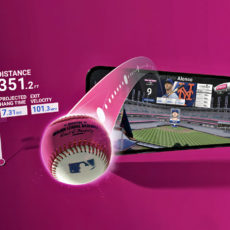
Back in September 2008, the smartphone world was on the cusp of something big. Apple’s iPhone had already turned heads, but a new player was ready to shake things up. Meet the HTC G1, the first Android phone to land in the U.S., hitting the scene with T-Mobile as its partner.
Unveiled on September 23, 2008, in New York City, the G1 (or HTC Dream outside the U.S.) rolled out with a goal to make smartphones more accessible. “We’re thrilled to team up with Google and HTC to bring the T-Mobile G1 to our customers,” said Christopher Schläffer, T-Mobile’s Chief Product and Innovation Officer.
Sale
SAMSUNG Galaxy S25 Edge Phone, 512 GB AI Smartphone, Unlocked Android, Night Video, Fast Processor,...
- SUPER SLIM. SUPER LIGHT: Galaxy S25 Edge is surprisingly light and our slimmest S Series phone yet. You’ll want to show off this sleek, super-slim...
- OUR POWERFUL 200MP CAMERA ON OUR SLIMMEST S SERIES PHONE: Capture every memory in stunning clarity with our highest-resolution camera on a Galaxy...
- MORE POWER TO YOU: Reimagine what’s possible with Galaxy S25 Edge, featuring our most powerful processor yet. Effortlessly translate your calls,...

Rocking a 3.2-inch capacitive touchscreen with a 320×480 resolution, the G1’s display was a total game-changer back then. A slide-out QWERTY keyboard was perfect for those who loved the feel of real keys. Available in black, white, or bronze, the G1 went for function over flair, with a curved “chin” and a trackball for scrolling—a quirky throwback to early 2000s tech. HTC’s touch was clear in the solid build, with CEO Peter Chou saying the G1 was designed to “change how people use their phones.”

At its core was Android 1.0, Google’s brand-new, open-source answer to Apple’s locked-down system. Unlike the iPhone’s closed setup, Android welcomed developers to build apps. The G1 launched with the Android Market—later the Google Play Store—with just 50 apps at first. Features like Google Maps with Street View, Gmail syncing, and a pull-down notification shade teased the future of Android smartphones.

The G1 is powered by a 528MHz Qualcomm MSM7201A chip, with 192 MB of RAM and 256 MB of internal storage, expandable via a microSD slot. Its 1150 mAh battery could reportedly last a day, though heavy GPS or web use drained it quickly. The 3.15-megapixel rear camera, without a flash or video recording, felt basic even in 2008. Still, it had 3G connectivity, Wi-Fi, and Bluetooth 2.0 to keep you connected on-the-go.
Syncing contacts, calendars, and emails with Gmail was a breeze, while Google Talk brought instant messaging on the go. YouTube let you stream videos when that was still a new thing, or at least on mobile devices. The WebKit-based browser handled basic HTML and Flash, though it wasn’t as smooth as the iPhone’s Safari. One win? You could copy and paste text, something the iPhone 3G couldn’t do (yet).
Priced at $179 with a two-year T-Mobile contract, the G1 went head-to-head with the iPhone 3G’s $199 tag. It hit stores on October 22, 2008, and moved 1 million units in six months—not bad for a new kid on the block. T-Mobile’s 3G network in major U.S. cities gave it a solid foundation.
There were a few drawbacks though, and for starters, its plastic build didn’t feel as fancy as the iPhone’s glass / metal chassis. Plus, the trackball could be a bit fiddly. Android 1.0 had some rough spots, with occasional slowdowns and a thin app selection compared to Apple’s App Store.










